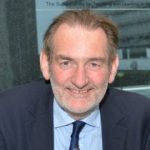The pandemic has revolutionised public data and there’s no turning back

The last year has been transformative for the use and understanding of public data, including at the Office for National Statistics. In this piece, which first appeared in the Times, the UK’s National Statistician, Professor Sir Ian Diamond, breaks down how far we’ve come.
It was this week a year ago when we first saw precisely how prevalent the virus had become. The initial wave in March had been severe enough to trigger the first lockdown. But until we began regularly testing a large, randomised cross-section of the population the real effectiveness of restrictions had been much harder to assess.
Quite simply there was no way of precisely estimating how many people were infected or knowing where they were.
From a standing start the Office for National Statistics (ONS) had less than three weeks to assemble a huge field-testing operation, gather and analyse samples from thousands of households and publish the first results. Working under the urgent need to protect lives, the ONS and our partners in the Department for Health and Social Care and the University of Oxford showed that big government projects can be delivered at pace.
What was achieved in days would, under normal circumstances, have taken many months. In that of course we are not alone. Across the public sector, the NHS and our great research institutions there have been many outstanding examples of progress achieved under pressure.
Fast and accurate
For us in the world of official statistics and public data the pandemic has been a transformative experience. Some developments, like the use of tax data and monthly GDP estimates to give faster readings of Covid-19’s economic impacts, were in place shortly before it hit.
Other initiatives, like the use of web data on job vacancies, restaurant reservations and credit card payments to give detailed, up-to-the-minute insights on trends and behaviours, were forged in the heat of crisis. The value of all these improvements has been proven beyond measure. Furthermore, as head of the UK statistical system I am determined there can be no turning back.
Fast, accurate economic data will continue to illuminate the road to recovery while an expanded programme of antibody testing will monitor the effectiveness of the vaccine rollout and with that our protection against a damaging third wave.
Data for public good
Meanwhile beyond the pandemic, there are huge benefits to be won from the smart application of data science to the structural issues the UK faces. The ONS is at the forefront of cross-government plans to inform key policy by linking anonymised datasets from across the public and private sectors. We can’t expect to enact the most effective policies without the best data.
Last month we asked households in England and Wales to take part in the decennial census. With a 97 per cent response rate the outcome so far exceeds our expectations. I have no doubt we will be able to produce excellent population estimates on which the recovery can be planned.
But if we go on from here to really harness the gains of the pandemic we will eventually be able to provide much faster answers to all of the big questions about our economy and society.

Sir Ian Diamond, National Statistician